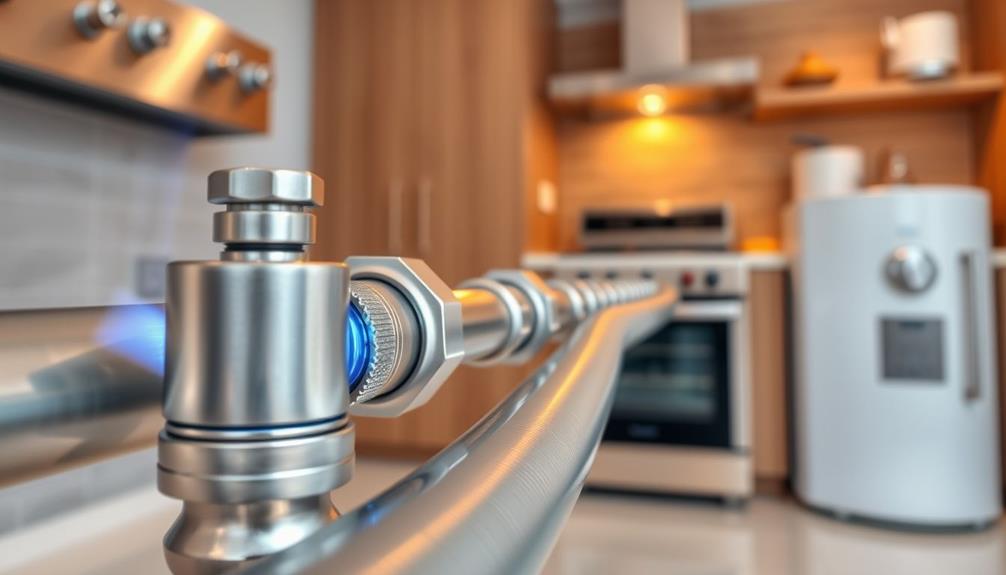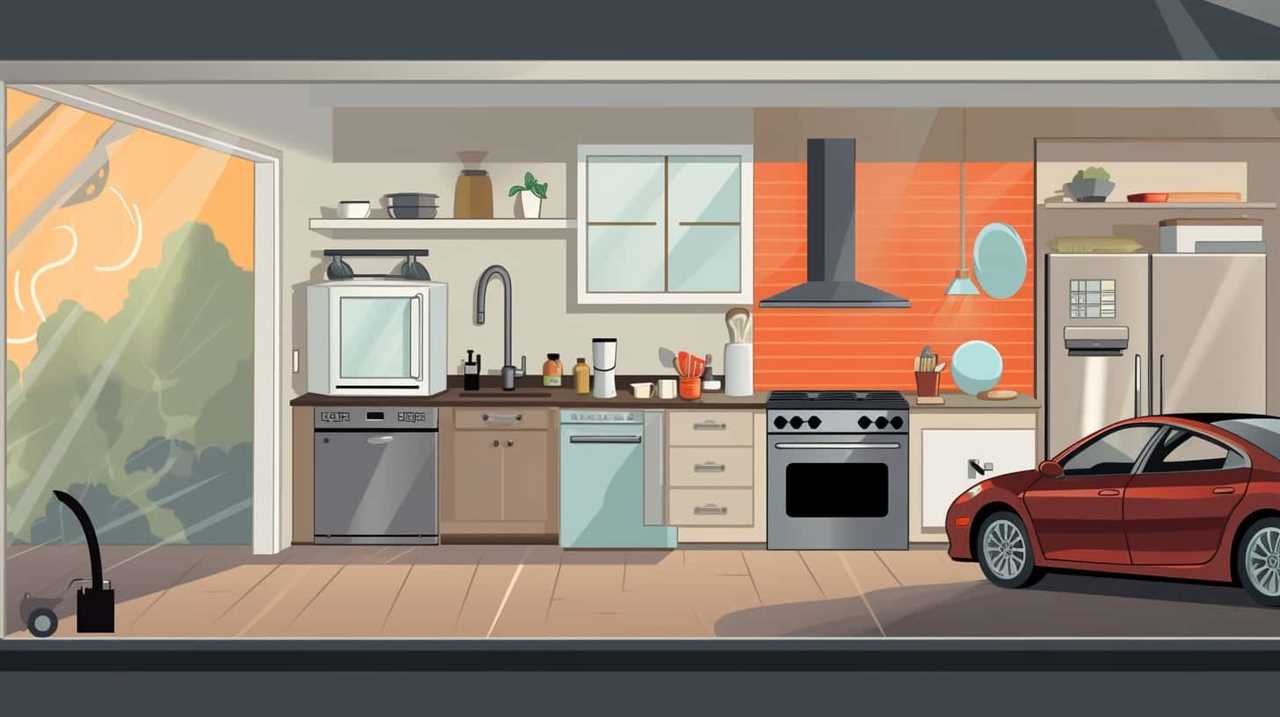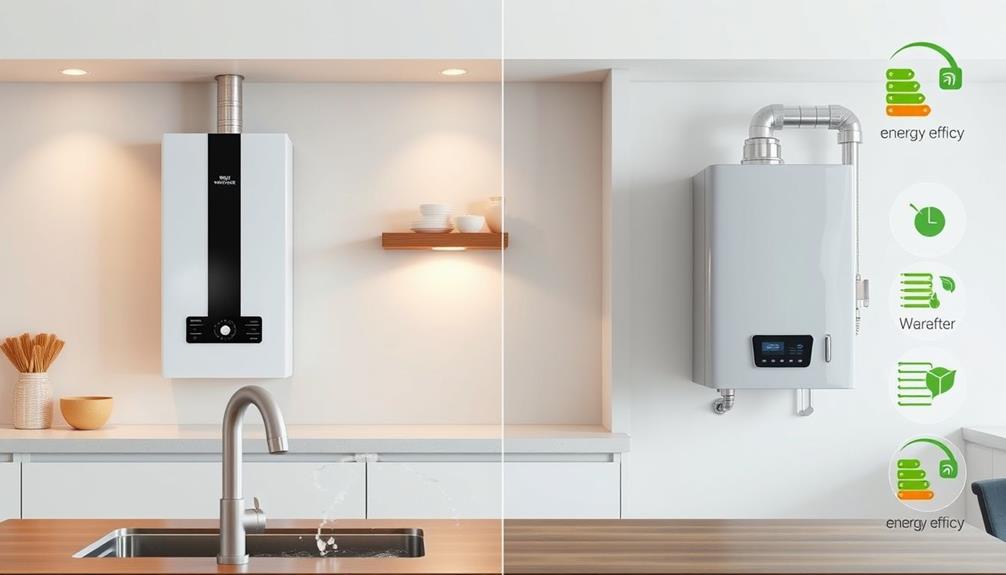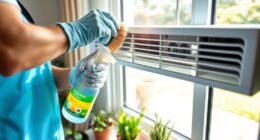A 2-inch gas line has the capacity to deliver approximately 1,200,000 BTUs, and the number of appliances it can accommodate will depend on each appliance’s specific BTU requirements. It is important to check the BTU rating on the nameplate of each appliance and ensure that the total does not exceed the capacity of the gas line, especially during peak usage. Longer gas lines may experience pressure drops which could impact the supply. Understanding these factors will enable you to effectively manage multiple appliances. Safety and efficiency are paramount, so continue to explore the details to ensure everything is in order!
Key Takeaways
- A 2-inch gas line can carry approximately 1,200,000 BTUs, determining the number of appliances it can supply simultaneously.
- The total BTU requirements of connected appliances should not exceed the gas line capacity to prevent overloading.
- Appliance BTU ratings can be found on nameplates; sum these ratings to assess total consumption.
- Longer gas lines may experience pressure drops, affecting overall BTU capacity and appliance performance.
- Consult local codes and a gas pipe expert to ensure proper sizing and compliance for appliance connections.
Understanding Gas Line Capacity
When it comes to understanding gas line capacity, you need to know how much energy your appliances require. A 2-inch gas line can carry approximately 1,200,000 BTUs, making it suitable for multiple high-demand appliances.
Additionally, considering the efficiency of your appliances will help you optimize energy use, similar to how pool heaters maintain temperatures year-round. However, the actual number of appliances it can supply depends on their BTU ratings and the combined load during simultaneous usage.
When planning gas line installation, consider how pressure drops can affect capacity, especially over longer distances. Accurate measurements are essential for effective load distribution, guaranteeing every connected appliance receives the proper amount of gas.
For instance, while a 2-inch gas line can accommodate numerous smaller appliances using 30,000 to 50,000 BTUs, you'll need to calculate their total combined load to avoid overloading the system.
Professional opinions are invaluable in this process. Consulting experts helps you verify proper gas line sizing and installation tailored to the specific demands of your appliances.
Calculating Appliance BTU Requirements

Calculating the BTU requirements of your appliances is vital for confirming your gas line can handle the load. Start by checking the nameplate on each connected appliance to find its BTU rating, which indicates how much gas it consumes.
It's significant to highlight that just as with plumbing systems, confirming proper flow and usage is essential for safety and efficiency. Next, sum these ratings to determine your total BTU requirements.
Keep in mind that a 2-inch gas line can typically supply between 1,000,000 to 2,000,000 British Thermal Units (BTUs), depending on its configuration.
Consider these points when calculating:
- List the BTU ratings for each appliance
- Calculate the total BTU requirements of all connected appliances
- Assess simultaneous usage to avoid overloading the gas line
- Account for pressure drops due to distance from the gas source
- Confirm total BTUs remain within the gas line capacity
For more insights on proper maintenance practices, refer to clogging remedies.
Factors Affecting Gas Supply
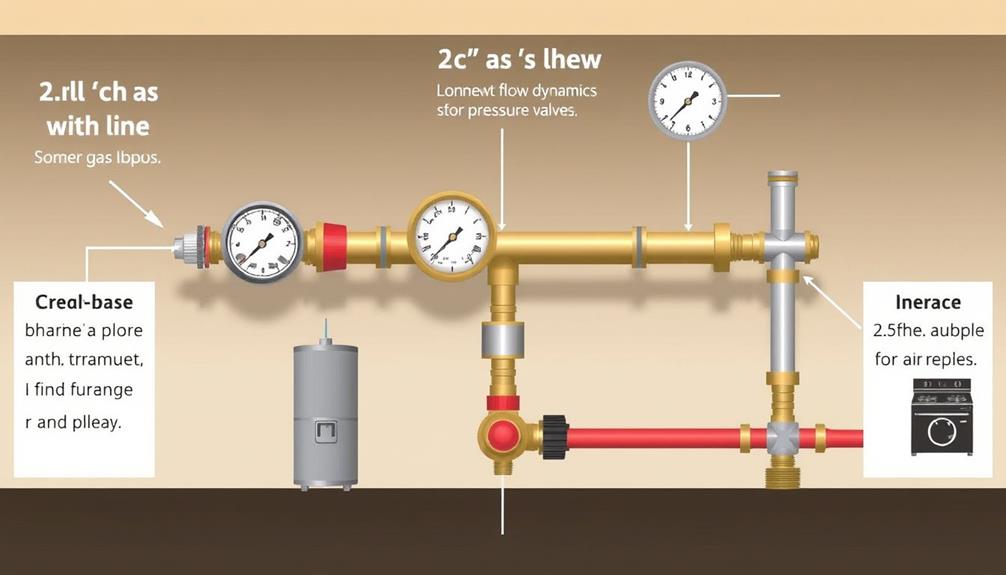
Understanding how many appliances a gas line can supply requires considering several factors that can affect the overall gas supply. A 2-inch gas line can typically handle up to 1,200,000 BTUs, but the actual number of appliances you can connect depends on their individual BTU ratings. If each appliance consumes 50,000 BTUs, you could theoretically support up to 24 appliances.
However, the length of the gas line plays a vital role, as longer lines may experience pressure drops, which can diminish the effective supply to your appliances. Additionally, the presence of branch lines and fittings can greatly impact gas flow and overall capacity. Each branch may require careful evaluation to verify it doesn't hinder the gas supply.
Lastly, you must comply with local codes and regulations, as these can dictate specific requirements for gas line sizing and capacity.
| Factor | Impact on Gas Supply |
|---|---|
| Length of Gas Line | Affects BTU capacity due to pressure drops |
| Appliance Consumption | Determines total appliance capacity |
| Branch Lines | Can reduce gas flow if not sized properly |
| Local Codes | Dictate minimum requirements for safety |
Safety Precautions for Installation

Before installing a gas line, it's vital to prioritize safety precautions to protect both your home and well-being. Adhering to safety standards and ensuring compliance with local codes is significant for a successful gas line installation.
To avoid hazards, follow these key safety measures:
- Hire licensed professionals: Always engage qualified experts for installation to guarantee adherence to safety regulations. This is similar to the importance of hiring trained and insured staff when seeking home cleaning services.
- Conduct pressure testing: Before using the gas line, perform pressure testing to identify any gas leaks or weaknesses that could lead to dangerous situations.
- Ensure proper venting: Adequate venting is necessary to prevent the accumulation of harmful gases like carbon monoxide, which can pose serious health risks.
- Schedule regular inspections: Routine checks help detect potential hazards, ensuring the integrity of your gas line and its ability to handle the appliance capacity safely.
- Prioritize maintenance: Regular maintenance not only keeps your gas line functioning but also mitigates the risks of leaks and other issues.
Best Practices for Multiple Appliances

When setting up multiple appliances on a gas line, it's essential to use proper sizing techniques to guarantee you don't exceed the line's capacity.
Additionally, consider the impact of indoor air quality from appliances that may produce pollutants, such as the effectiveness of ozone air purifiers in neutralizing odors and allergens.
You'll also want to implement load balancing strategies to distribute gas evenly and maintain peak performance.
Proper Sizing Techniques
Properly sizing a gas line for multiple appliances is vital to guarantee safety and efficiency. You need to understand the total BTU load of all connected appliances to verify the combined demand doesn't exceed the gas line's capacity.
A 2-inch gas line can supply approximately 2,000,000 BTUs, but this depends on the line's length and configuration. For example, in a home setting, the right balance between comfort and functionality is significant, similar to creating a modern farmhouse bedroom that emphasizes serenity and style.
To achieve proper sizing, consider the following best practices:
- Calculate the total BTU load of all appliances.
- Assess the maximum simultaneous usage to verify adequate supply during peak demand.
- Use a gas pipe sizing chart to determine flow capacity, accounting for pressure drop and total distance.
- Schedule regular inspections to confirm the integrity of the gas line.
- Conduct pressure tests to ensure peak performance when supplying multiple appliances.
Load Balancing Strategies
Balancing the load across multiple gas appliances is vital for maintaining efficiency and safety in your home. To effectively manage this, you'll want to calculate the total BTU requirements of all appliances connected to your gas line. With a 2-inch gas line capable of supplying about 900,000 BTUs, it's essential to verify that the combined load doesn't exceed this limit.
One effective method is using a manifold system. This helps distribute gas evenly to multiple appliances while reducing pressure loss and guaranteeing peak performance. Regular monitoring of gas flow and conducting pressure tests can help you identify any imbalances or potential issues early on, preventing disruptions in appliance performance.
Here's a table to help you understand load balancing better:
| Appliance | BTU Requirement | Usage Staggering |
|---|---|---|
| Water Heater | 40,000 | Use off-peak hours |
| Furnace | 60,000 | Use off-peak hours |
| Stove | 30,000 | Use together |
| Dryer | 30,000 | Use separately |
Evaluating Existing Gas Lines

When evaluating your existing gas lines, you need to assess the BTU capacity to guarantee it meets your appliances' demands.
It's also essential to take into account the types of appliances you're using, as some may require more power than others, especially those with electronic controls.
Reflect on the line length as longer runs can reduce the effective supply, affecting your overall setup.
Assessing BTU Capacity
Regularly evaluating the BTU capacity of your existing gas lines is essential for guaranteeing they can support your appliances effectively. A 2-inch gas line has a maximum capacity of about 1,600,000 BTUs at 100 feet, but this capacity decreases with longer lengths.
To maintain safety standards, you must consider the total developed length from the meter to the farthest appliance. Proper HVAC maintenance can also contribute to the overall efficiency of your gas appliances.
Here are some key points to assess your gas line's BTU capacity:
- Sum the BTU ratings of all individual appliances.
- Guarantee the total BTUs don't exceed the gas line's maximum capacity.
- Consider the effect of pressure drops over longer distances.
- Regularly check for compliance with local codes.
- Perform routine gas line evaluations to meet current demands.
Analyzing Line Length
Evaluating the length of your gas line is vital for guaranteeing it can efficiently supply your appliances. The total length from the gas meter to the last appliance greatly impacts the BTU capacity.
With a 2-inch gas line, you might think you can handle a substantial load, typically up to 1,000,000 BTUs. However, the longer the length, the more it can reduce this capacity due to pressure drops. Additionally, understanding the efficiency measured by Coefficient of Performance can help in evaluating how well your gas line supports your heating needs.
Each additional foot of gas line can decrease the maximum BTU capacity, so you'll need to measure the entire length accurately. Don't forget to factor in any bends or branches, as these can further affect the effective capacity of the system.
It's imperative to evaluate your existing gas lines thoroughly to ascertain they can adequately supply multiple appliances without risking gas starvation or performance issues.
When you decide to install or upgrade, keep these considerations in mind. A well-analyzed gas line setup won't only improve efficiency but also enhance the safety and reliability of your appliances.
Professional Consultation Recommendations

Consulting with a licensed gas technician is essential for guaranteeing your gas line can safely support your appliances. They can accurately assess the total BTU output required for all your gas appliances, guaranteeing proper sizing and installation.
A 2-inch gas line can typically support a significant load, often exceeding 1,000,000 BTUs, which is ideal for multiple high-demand appliances. Additionally, understanding the legal and regulatory framework surrounding gas installations can help guarantee compliance and safety in your setup.
Here are some recommendations for your professional consultation:
- Assess BTU Output: Understand the total BTU requirements of your appliances.
- Evaluate Line Size: Consult a gas pipe expert to confirm the appropriate size for your needs.
- Inspect Distance: Consider the distance from the gas meter to your appliances; longer runs might require adjustments.
- Check Local Code Compliance: Guarantee that your installation meets local regulations for safety and efficiency.
- Identify Pressure Issues: Regular communication with gas suppliers can help detect any potential pressure issues.
Frequently Asked Questions
Can You Run Two Appliances off One Gas Line?
You can run two appliances off one gas line, but it's essential to guarantee their combined BTU demand doesn't exceed the line's capacity. Proper sizing and connections prevent pressure drops and guarantee efficient operation.
How Many Appliances Can a 3/4 Gas Line Supply Per?
A 3/4 inch gas line can support multiple appliances, depending on their BTU ratings. You'll need to calculate the total load to guarantee it doesn't exceed 145,000 BTUs for safe operation.
Can a Water Heater and Dryer Share a Gas Line?
Yes, a water heater and dryer can share a gas line if their combined BTU requirements don't exceed the line's capacity. Just make sure to use proper T-connections and consult a professional for guidance.
How Many Appliances Are on a 1/2 Gas Line?
When considering a 1/2 inch gas line, you'll find it can support one or two appliances efficiently. Just remember to evaluate each appliance's BTU requirement to avoid overloading and guarantee proper functionality.
Conclusion
In summary, a 2-inch gas line can supply a substantial amount of appliances, often supporting up to 1,000,000 BTUs per hour. That means you could potentially run several high-demand appliances simultaneously, like your furnace, water heater, and stove. However, it's essential to take into account your specific needs and local regulations. Always consult a professional to guarantee safety and efficiency, so you can enjoy your appliances without worry and keep your home running smoothly.
